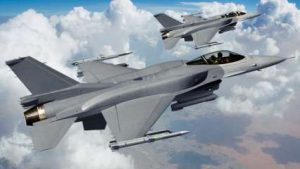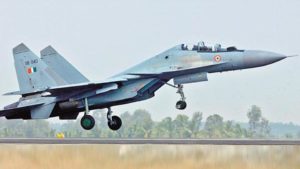
Indian Air Force To Hold Biggest Ever War Drills Near Chinese Border
The Indian Air Force is all set to hold its biggest ever and almost real war-type exercise named Gangashakti. The IAF has taken down the ‘enemy’ bases on the western frontier, and now it has moved to the mountainous borders on the Chinese front where the fighter aircraft will strike against several targets in high altitude areas and airdrop troops.

In a humongous effort which involves the heavy duty C-17 Globe master, Ilyushin-76, C-130J Super Hercules and the Antonov-32s, the entire focus of the exercise is directed towards to the Chinese front now, as, in the first phase, the Air Force has tackled the ‘threat’ from the Pakistan side.
If sources are to be believed, the two-phased exercise is being conducted under the presumption that the threat may initially emanate from the western front and can be suppressed through a swift offensive in a very short span of time frame.

As per the information, in the second phase, the assumption would be-be that fazed by the crushing defeat of India’s western neighbour, the northern adversary also starts offensive operations along the 4,000 long kilometre border for which the entire focus of operations of the Air Force is shifted to the eastern front.
“On Monday and Tuesday, for 48 hours, the combat aircraft including the Su-30MKI will practice hitting at targets at high altitude areas along the border with China as locating and hitting them at high altitude is comparatively difficult,” a government source told News Agencies.
The radars also find it a bit difficult to pick up hidden targets and the war games would also help the pilots improve their skills in this field, the sources said. The radars also find it very difficult to pick up hidden targets and the war games would also help the pilots to improve their skills in this particular field, the sources said. During the war games to shift focus on to the mountainous terrain from the desert and plains of the western front, the transport aircraft would need to carry along the support equipment for the fighter squadrons of Mirage 2000, MiG 29 and Jaguars, while the mobile missile units have also moved swiftly in that region, the sources said.
“One of the biggest achievements of the exercise has been to achieve high serviceability of 80 per cent regarding fighter aircraft, which means almost 500 of the more than 600 aircraft fleet of the force is available for offensive operations. This figure is astonishing as it is comparatively lower in peace times,” they said.
Air Force officials also credited the help of Hindustan Aeronautics Limited in extending support to achieve such high numbers regarding serviceability as the public sector unit had deployed its technical teams at forwarding bases for support.
The Air Force would also deploy military helicopters to carry out extensive Inter-Valley Troop Transfer drills, under which troops would be deployed on a fast-paced mode from one place to other to counter a sudden intrusion by enemy troops in a high mountainous pass.
Sources said that in the first phase of the exercise, the aircraft of the Delhi-based Western Air Command and the Gandhinagar-based South Western Air Command clocked 5,000 hours of fighter aircraft flying in three days which is more than the flying they would do together in a month.
The exercise began on April 8 and is expected to continue till April 22, during which the force needs to validate all its warfighting concepts.
You May Also Read: Swedish PM Breaks Protocol To Welcome Modi At Airport